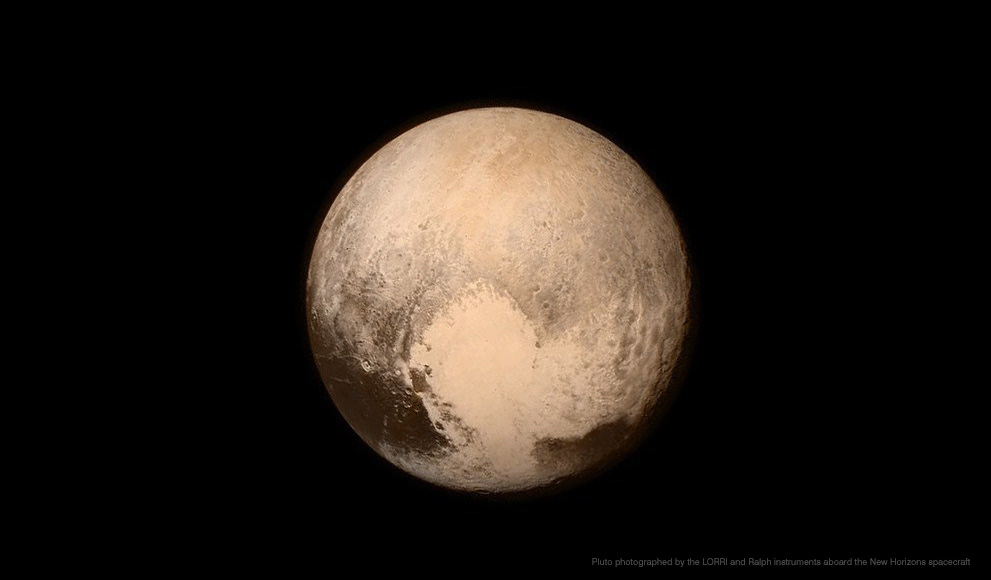Alumna Among “The Women Who Power NASA’s New Horizons Mission to Pluto”

NASA’s New Horizons spacecraft has reached Pluto, some three billion miles from Earth, after a nearly decade-long journey through the solar system. On Tuesday, New Horizons made its closest approach to Pluto, about 7,750 miles above the surface. A Wellesley alumna is among the women who, according to a recent NASA post, comprise approximately 25 percent of the New Horizons flyby team. Amanda Zangari ‘08 studied astrophysics at Wellesley then planetary science at MIT. She is now a postdoctoral researcher on the team.
In a post last year on her blog Postcards from Pluto Zangari wrote, “This is the first spacecraft to fly by Pluto, and unlike missions that could fly to Mars, or Jupiter, or Saturn or Europa, or just about anywhere else among the planets, we don’t already know what Pluto looks like, unless you count grainy 11 pixel pictures from the Hubble Space Telescope. New Horizons is going to bring back pictures of a world humanity has never seen before.”
Yesterday morning, the spacecraft did just that, giving the world the sharpest photos ever seen of the celestial body.
Zangari participated in a Reddit AMA (Ask Me Anything) yesterday with some of her New Horizons teammates. In a few responses, she explained some of the things she’s most excited about learning from the photographs.
She wrote, “Seeing Pluto this morning was pretty great, but it made me feel curious, wondering how Pluto came to have its bright and dark areas, and why it's cratered the way it is. We hope that seeing Pluto's surface (and Charon's) will give us a record of what went on in the Kuiper Belt, and more broadly, the remnants of the disk in which planets form.”
Charon is the largest of Pluto’s five known moons; the others are Styx, Nix, Kerberos, and Hydra.
In another response she wrote that she is “most excited to see up-close images of ‘the whale’ and ‘the heart,’ as well as LEISA spectra of those images to see what they are made of.” Pluto’s surface is dominated by a feature informally named the “Heart”.
She continued, “I'm looking forward to images of Hydra. With Pluto and Charon, we've gotten increasingly clearer images that have teased us. Hydra has been nothing more than a pixel or two, barely resolved. What it is like will be a complete surprise to us, though we have some suspicion. Ditto with the other small satellites. I'm also looking forward to seeing the stereo mosaic we are doing of Pluto's surface, which will help us determine elevation.”
Zangari didn't come to Wellesley intending to major in astrophysics. She said she choose the major after meeting Kim McLeod, professor of astronomy, in her first year mentor group.
“I took [McLeod’s] astronomy class, Astro 110, and then ended up deciding to major in astrophysics. It wasn't originally planned,” Zangari wrote in an email. In addition to working with Professor McLeod, Zangari said she assisted Richard French, Louise Sherwood McDowell and Sarah Frances Whiting professor of astrophysics and professor of astronomy, and worked with Wendy Bauer, professor of astronomy.
“I wouldn't be here today if it wasn't for Wellesley's astro department,” Zangari said in the email. "The stuff I learned working for Wellesley professors I use every day doing my work for NASA's New Horizons mission."
The flyby mission phase began July 7 and concludes July 16. According to Popular Science, it's going to take about 16 months for the spacecraft to beam back all of the data it has collected over the past few days. Scientists expect the mission's major discoveries to occur in late 2015 and early 2016.
